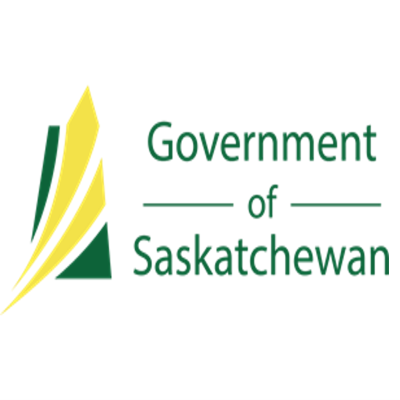density
Type of resources
Topics
Keywords
Contact for the resource
Provided by
Formats
Representation types
Update frequencies
status
-

The [map 3.1.2] (https://mtl.ged.montreal.ca/constellio/?collection=mtlca&portal=REPDOCVDM#!displayDocument/00000019294) expresses the building density for the whole city according to a 17-color scale that integrates the various density parameters. It is available in [section 3.1.2] (https://mtl.ged.montreal.ca/constellio/?collection=mtlca&portal=REPDOCVDM#!searchResults/s/9f45f91f-af33-11ee-9b08-4b10d95b597d) of the Urban Plan. Construction density parameters make it possible to frame architectural production and to determine the scale of urban form as well as the intensity of activities on the various portions of the territory. For each of the sectors to be built or transformed, the parameters set out reflect the intentions of the Plan as to the desired character. In established sectors, these parameters correspond to the general character of the existing buildings whose sustainability the Plan aims at. Consult the [interactive map] (https://montreal.ca/services/cartes-interactives-amenagement-du-territoire) of the Urban Plan to visualize the thematic data. **This third party metadata element was translated using an automated translation tool (Amazon Translate).**
-

Many cetacean species were depleted in Canadian Pacific waters by commercial whaling, which ended in 1967. Although some populations have since shown evidence of recovery, there is limited information about the current abundance and geographic distribution of many species, particularly in difficult-to-survey offshore regions. This lack of baseline data hampers conservation status assessments, including estimating population-level impacts of anthropogenic activities. From July to early September 2018, we conducted ship-based surveys of cetaceans throughout the coastal and offshore waters of British Columbia. Density surface modelling (DSM) was used to produce spatially-explicit abundance estimates and distribution maps for four commonly-encountered cetacean species: the humpback whale (Megaptera novaeangliae), fin whale (Balaenoptera physalus), Dall’s porpoise (Phocoenoides dalli) and harbour porpoise (Phocoena phocoena). We estimated abundances of 7,030 (95% CI = 5,733-8,620) humpback whales, 2,893 (95% CI = 2,171-3,855) fin whales, 23,692 (95% CI = 19,121-29,356) Dall’s porpoises and 5,207 (95% CI = 2,769-9,793) harbour porpoises throughout Canadian Pacific waters. Our results complement design-based abundance estimates calculated from the same survey data, and can be compared with past habitat modelling studies and historical whaling catch data to estimate the extent of recovery of previously harvested populations. The return of these predators to habitats from which they were previously extirpated will have important ecosystem-level implications. The DSM results can contribute to calculations of Potential Biological Removal estimates to inform fisheries bycatch, as well as providing spatial data that can be used to assess the risk of entanglements, ship strikes, acoustic disturbance, and other anthropogenic threats. This dataset contains model-predicted densities of four commonly-encountered cetacean species (humpback whale, fin whale, Dall's porpoise and harbour porpoise) that were estimated using ship-based, visual survey data collected during the Pacific Region International Survey of Marine Megafauna (PRISMM) in July-August of 2018. Abundance of each species (where relevant) is provided for three gridded strata (25 km2 cell size) in the Pacific Region: one for the offshore, extending to Canada’s exclusive economic zone (EEZ), and two for coastal areas (the North Coast and the Salish Sea).
-

These datasets provide information pertaining to sediment grain size, porosity, organic content, total carbon and nitrogen concentrations, trace element concentrations, chlorophyll and phaeopigment concentrations, and meiofauna and macrofaunal abundance in Simoom Sound between November, 2000, and February, 2001. Data formatting of files were performed by Meagan Mak. Sutherland et al (2023) covers the benthic component of a broader project investigating potential modification of marine ecosystems by shrimp trawling and trapping on the central coast of British Columbia. Sediment and infaunal samples were collected before and after fishing with commercial fishing gear consisting of otter-trawl, beam-trawl, and trap-lines. Simoom Sound was sampled in November 2000 and February 2001. Tabulated data of sediment characteristics that include sediment grain size, porosity, carbon and nitrogen content, trace-element, and chlorophyll concentrations are presented in this report. In addition, the infaunal data are comprised of both macrofaunal and meiofaunal communities.
-

Stems per hectare - total (SPHTOT) is an expression of the total number of merchantable trees on a per-hectare basis. Available here as total stems per hectare raster (GeoTIF) with a 20 m pixel resolution. Download: Here The Saskatchewan Ministry of Environment, Forest Service Branch, has developed a forest resource inventory (FRI) which meets a variety of strategic and operational planning information needs for the boreal plains. Such needs include information on the general land cover, terrain, and growing stock (height, diameter, basal area, timber volume and stem density) within the provincial forest and adjacent forest fringe. This inventory provides spatially explicit information as 10 m or 20 m raster grids and as vectors polygons for relatively homogeneous forest stands or naturally non-forested areas with a 0.5 ha minimum area and a 2.0 ha median area. Stems per hectare - total (SPHTOT) is an expression of the number of merchantable trees on a per-hectare basis. SPHTOT is available here as a color-mapped 16-bit unsigned integer raster grid in GeoTIFF format with a 20 m pixel resolution. An ArcGIS Pro layer file (*.lyrx) is supplied for viewing SPHTOT data in the following 500 stems/ha categories. Domain: [NULL, 0…100,000]. RANGE LABEL RED GREEN BLUE 0 <= SPHTOT < 250 0 NA NA NA 250 <= SPHTOT < 750 500 63 81 181 750 <= SPHTOT < 1250 1000 67 112 147 1250 <= SPHTOT < 1750 1500 72 144 114 1750 <= SPHTOT < 2250 2000 76 175 80 2250 <= SPHTOT < 2750 2500 136 195 73 2750 <= SPHTOT < 3250 3000 195 215 66 3250 <= SPHTOT < 3750 3500 255 235 59 3750 <= SPHTOT < 4250 4000 255 207 39 4250 <= SPHTOT < 4750 4500 255 180 20 4750 <= SPHTOT < 5250 5000 255 152 0 5250 <= SPHTOT < 5750 5500 251 124 18 5750 <= SPHTOT < 6250 6000 248 95 36 6250 <= SPHTOT < 6750 6500 244 67 54For more information, see the Forest Inventory Standard of the Saskatchewan Environmental Code, Forest Inventory Chapter.
-

Stems per hectare - hardwood (SPHHWD) is an expression of the number of merchantable hardwood trees on a per-hectare basis. Available here as hardwood stems per hectare raster (GeoTIF) with a 20 m pixel resolution. Download: Here The Saskatchewan Ministry of Environment, Forest Service Branch, has developed a forest resource inventory (FRI) which meets a variety of strategic and operational planning information needs for the boreal plains. Such needs include information on the general land cover, terrain, and growing stock (height, diameter, basal area, timber volume and stem density) within the provincial forest and adjacent forest fringe. This inventory provides spatially explicit information as 10 m or 20 m raster grids and as vectors polygons for relatively homogeneous forest stands or naturally non-forested areas with a 0.5 ha minimum area and a 2.0 ha median area. Stems per hectare - hardwood (SPHHWD) is an expression of the number of merchantable hardwood trees on a per-hectare basis. SPHHWD is available here as a color-mapped 16-bit unsigned integer raster grid in GeoTIFF format with a 20 m pixel resolution. An ArcGIS Pro layer file (*.lyrx) is supplied for viewing SPHHWD data in the following 500 stems/ha categories. Domain: [NULL, 0…100,000]. RANGE LABEL RED GREEN BLUE 0 <= SPHHWD < 250 0 NA NA NA 250 <= SPHHWD < 750 500 63 81 181 750 <= SPHHWD < 1250 1000 67 112 147 1250 <= SPHHWD < 1750 1500 72 144 114 1750 <= SPHHWD < 2250 2000 76 175 80 2250 <= SPHHWD < 2750 2500 136 195 73 2750 <= SPHHWD < 3250 3000 195 215 66 3250 <= SPHHWD < 3750 3500 255 235 59 3750 <= SPHHWD < 4250 4000 255 207 39 4250 <= SPHHWD < 4750 4500 255 180 20 4750 <= SPHHWD < 5250 5000 255 152 0 5250 <= SPHHWD < 5750 5500 251 124 18 5750 <= SPHHWD < 6250 6000 248 95 36 6250 <= SPHHWD < 6750 6500 244 67 54For more information, see the Forest Inventory Standard of the Saskatchewan Environmental Code, Forest Inventory Chapter.
-

Stems per hectare - softwood (SPHSWD) is an expression of the number of merchantable softwood trees on a per-hectare basis. Available here as softwood stems per hectare raster (GeoTIF) with a 20 m pixel resolution. Download: Here The Saskatchewan Ministry of Environment, Forest Service Branch, has developed a forest resource inventory (FRI) which meets a variety of strategic and operational planning information needs for the boreal plains. Such needs include information on the general land cover, terrain, and growing stock (height, diameter, basal area, timber volume and stem density) within the provincial forest and adjacent forest fringe. This inventory provides spatially explicit information as 10 m or 20 m raster grids and as vectors polygons for relatively homogeneous forest stands or naturally non-forested areas with a 0.5 ha minimum area and a 2.0 ha median area. Stems per hectare - softwood (SPHSWD) is an expression of the number of merchantable softwood trees on a per-hectare basis. SPHSWD is available here as a color-mapped 16-bit unsigned integer raster grid in GeoTIFF format with a 20 m pixel resolution. An ArcGIS Pro layer file (*.lyrx) is supplied for viewing SPHSWD data in the following 500 stems/ha categories. Domain: [NULL, 0…100,000]. RANGE LABEL RED GREEN BLUE 0 <= SPHSWD < 250 0 NA NA NA 250 <= SPHSWD < 750 500 63 81 181 750 <= SPHSWD < 1250 1000 67 112 147 1250 <= SPHSWD < 1750 1500 72 144 114 1750 <= SPHSWD < 2250 2000 76 175 80 2250 <= SPHSWD < 2750 2500 136 195 73 2750 <= SPHSWD < 3250 3000 195 215 66 3250 <= SPHSWD < 3750 3500 255 235 59 3750 <= SPHSWD < 4250 4000 255 207 39 4250 <= SPHSWD < 4750 4500 255 180 20 4750 <= SPHSWD < 5250 5000 255 152 0 5250 <= SPHSWD < 5750 5500 251 124 18 5750 <= SPHSWD < 6250 6000 248 95 36 6250 <= SPHSWD < 6750 6500 244 67 54For more information, see the Forest Inventory Standard of the Saskatchewan Environmental Code, Forest Inventory Chapter.
 Arctic SDI catalogue
Arctic SDI catalogue